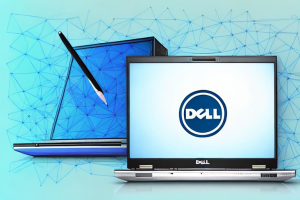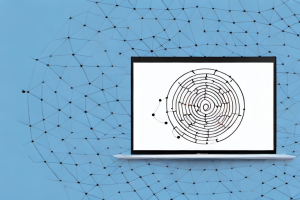How to optimize battery life on a Dell XPS 13 9300
9 min read
A dell xps 13 9300 laptop with a battery icon indicating improved battery life
Dell XPS 13 9300 is a high-end laptop that offers impressive performance and top-notch features. However, like any other laptop, the battery life of the XPS 13 9300 eventually wears off, leading to the need for frequent charging. If you’re constantly on the go or need to work extensively on your laptop, this can be very frustrating. Fortunately, there are several things you can do to optimize your Dell XPS 13 9300’s battery life and ensure that it lasts as long as possible. In this article, we’ll discuss some of the most effective techniques for maximizing battery life on the Dell XPS 13 9300.
Understanding the Battery Life of Dell XPS 13 9300
Before we dive into the specifics of battery optimization techniques, it’s important to understand how the battery life of Dell XPS 13 9300 works. The Dell XPS 13 9300 comes with a 52 Wh battery, which is a relatively small battery capacity for a laptop of this caliber. This means that it’s important to use the available battery power judiciously to get the most out of it. Additionally, the battery life of Dell XPS 13 9300 can vary significantly depending on the hardware configuration, screen brightness, and power management settings.
It’s worth noting that the battery life of Dell XPS 13 9300 can also be affected by the type of tasks you perform on the laptop. For example, if you’re running resource-intensive applications like video editing software or playing graphics-heavy games, the battery life will be significantly shorter than if you’re just browsing the web or working on a document. Therefore, it’s important to be mindful of the tasks you’re performing and adjust your power settings accordingly to maximize battery life.
Getting Started with Battery Optimization Techniques
There are a few things you can do to get started with battery optimization techniques on the Dell XPS 13 9300. The first step is to evaluate your typical usage patterns and identify areas where you can reduce power consumption. For example, if you use your laptop for browsing the web, you can significantly save battery life by using a lightweight browser, disabling browser extensions, and minimizing multiple tabs. Similarly, if you use your laptop for video conferencing, you can reduce power consumption by using headphones instead of built-in speakers and reducing the brightness of the screen.
Another way to optimize your battery life is to adjust your power settings. You can do this by going to the Control Panel and selecting Power Options. From there, you can choose a power plan that suits your needs. For example, the Power Saver plan will reduce your computer’s performance to save energy, while the High Performance plan will maximize performance at the expense of battery life.
In addition to adjusting your power settings, you can also consider upgrading your hardware. For instance, you can replace your hard drive with a solid-state drive (SSD), which uses less power and is faster than a traditional hard drive. You can also upgrade your RAM, which can help your computer run more efficiently and reduce power consumption.
Adjusting Display Settings to Save Battery Life
The display is one of the most power-hungry components of a laptop. Reducing the brightness of the screen can go a long way in conserving battery life on the Dell XPS 13 9300. You can also adjust the screen resolution to a lower value to save battery life. Another thing you can do is to enable the adaptive brightness feature, which adjusts the screen brightness based on the ambient light in the room. This can help save battery life and reduce eye strain at the same time.
In addition to adjusting the display settings, you can also optimize your power plan settings to further extend your laptop’s battery life. You can choose a power plan that is specifically designed for battery life, such as the “Power Saver” plan. You can also customize your power plan settings to turn off certain features when they are not in use, such as Wi-Fi and Bluetooth. This can help reduce the amount of power your laptop consumes and extend its battery life.
Minimizing Background Process to Improve Battery Performance
Background processes can consume a significant amount of battery life on the Dell XPS 13 9300. To optimize battery life, it’s important to minimize the number of background processes running on your laptop. You can do this by closing unnecessary applications and disabling startup programs. Additionally, you can use the Task Manager to monitor and close any applications that are using an excessive amount of CPU and memory resources.
Another way to minimize background processes is to adjust your power settings. By selecting the “Power saver” option, your laptop will automatically reduce the amount of power used by background processes, resulting in longer battery life. You can also customize your power settings to further optimize your laptop’s performance and battery life.
In addition to minimizing background processes, it’s important to keep your laptop’s hardware and software up to date. Regularly updating your operating system, drivers, and applications can improve performance and reduce the amount of resources needed to run background processes. It’s also important to keep your laptop clean and free of dust, as overheating can cause your laptop to use more power and reduce battery life.
Managing Power Settings for Maximum Battery Efficiency
The Windows operating system comes with several power management settings that you can use to optimize battery life on the Dell XPS 13 9300. For example, you can use the Power Saver mode, which reduces the performance of the laptop to save battery life. You can also adjust the sleep settings to ensure that the laptop goes into sleep mode when it’s inactive for a certain period. Additionally, you can adjust the screen timeout settings so that the screen turns off when it’s not in use.
Another way to maximize battery efficiency is to close any unnecessary applications and programs running in the background. This will reduce the workload on the laptop’s processor and help conserve battery life. You can also disable any hardware devices that you’re not using, such as Bluetooth or Wi-Fi, to further reduce power consumption. Finally, keeping your laptop clean and free of dust and debris can also help improve its overall performance and battery life.
Tips for Reducing Power Consumption on Dell XPS 13 9300
Here are a few additional tips for reducing power consumption on the Dell XPS 13 9300:
- Use battery-saving apps that automatically adjust power settings based on your usage patterns.
- Disable wireless devices like Wi-Fi, Bluetooth, and NFC when they’re not in use.
- Reduce the volume of the speakers or use headphones to save battery life.
- Close any unused applications and browser tabs.
Another effective way to reduce power consumption on the Dell XPS 13 9300 is to lower the screen brightness. The brighter the screen, the more power it consumes. You can adjust the brightness level by pressing the F6 key or by going to the Windows Settings and selecting the System option. Additionally, you can also set the screen to turn off after a certain period of inactivity to save power.
Optimizing the Operating System to Conserve Battery Life
The operating system can have a significant impact on the battery life of the Dell XPS 13 9300. Keeping your operating system updated with the latest security patches and performance enhancements can help improve battery life. Additionally, you can optimize your laptop’s operating system by disabling any unnecessary features and services that you don’t use. For example, you can disable visual effects, search indexing, and other features that may consume resources.
Another way to optimize your operating system for better battery life is to adjust the power settings. You can change the power plan to a more battery-friendly option, such as the “Power Saver” mode. This will reduce the performance of your laptop, but it will also conserve battery life. You can also adjust the screen brightness and timeout settings to further conserve battery life.
Finally, it’s important to keep your laptop clean and free of dust and debris. Overheating can cause your laptop to consume more power, which can drain the battery faster. Regularly cleaning the vents and fans can help prevent overheating and improve battery life. Additionally, using a cooling pad or stand can also help keep your laptop cool and extend battery life.
How to Use Battery Saver Mode on Dell XPS 13 9300
The Battery Saver mode is a useful feature that can significantly extend the battery life of the Dell XPS 13 9300. This mode reduces the performance of the laptop and turns off certain services to save battery life. You can activate the Battery Saver mode by clicking on the battery icon in the taskbar and selecting the Battery Saver option. You can also customize the Battery Saver mode settings by going to the Power and Sleep Settings and selecting Additional Power Settings.
It is important to note that while the Battery Saver mode can extend the battery life of your Dell XPS 13 9300, it may also affect the performance of certain applications. If you notice that your laptop is running slower than usual, you may want to consider turning off the Battery Saver mode or adjusting the settings to allow for better performance. Additionally, it is recommended to keep your laptop plugged in while using high-performance applications or when you need to use your laptop for an extended period of time.
Configuring Advanced Power Settings for Better Performance
If you want more control over the power management settings of your Dell XPS 13 9300, you can configure advanced power settings. To do this, go to the Power and Sleep Settings and select Additional Power Settings. You can then customize settings like the processor power management, display brightness, and battery threshold. Keep in mind that adjusting advanced power settings can significantly impact the battery life of your laptop, so use caution when making changes.
Monitoring Battery Drain and Troubleshooting Common Issues
If you’re experiencing issues with battery life on the Dell XPS 13 9300, it’s important to monitor your battery usage to identify any underlying issues. You can do this by going to the Task Manager and selecting the Performance tab. You can then monitor the CPU, memory, and disk usage of your laptop. If you notice any abnormal activity, it may be a sign of malware infection or hardware malfunction. In such cases, it’s important to scan your laptop for malware and contact technical support for assistance.
How to Extend Your Dell XPS 13 9300’s Battery Life When Traveling
If you’re traveling with your Dell XPS 13 9300 and need to maximize your battery life, there are a few things you can do. First, reduce the screen brightness to the minimum level that’s still comfortable to use. Second, turn off any wireless features like Wi-Fi, Bluetooth, and NFC when they’re not in use. Third, use battery-saving apps that automatically adjust power settings based on your usage patterns. Finally, carry a spare battery or power bank to ensure that you never run out of power when you’re on the go.
Exploring Third-Party Applications that can Help Improve Battery Life
Finally, there are several third-party applications that can help improve battery life on the Dell XPS 13 9300. These applications can perform system optimizations, adjust hardware settings, and monitor battery usage in real-time. Some popular battery-saving apps include BatteryBar, BatteryCare, and Battery Optimizer. Before installing any third-party application, make sure to read reviews and ensure that it’s from a reputable developer.
Conclusion
Optimizing battery life on the Dell XPS 13 9300 is crucial for ensuring that you get the most out of your laptop. By following the techniques discussed in this article, you can significantly extend the battery life of your laptop and avoid the frustration of frequent charging. Remember to regularly monitor your battery usage and troubleshoot any issues to ensure that your Dell XPS 13 9300 performs optimally at all times.


